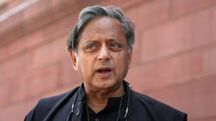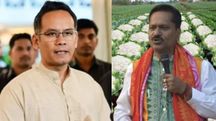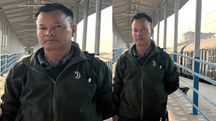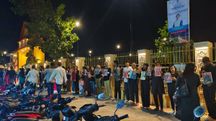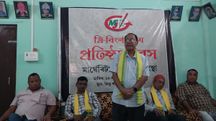The illusion of truth in Char Chaporis of Assam
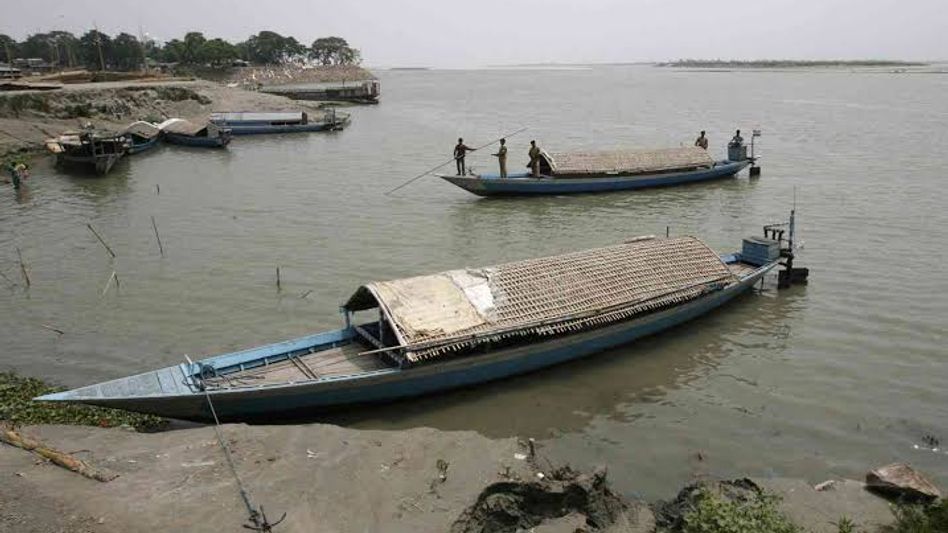 Representative Image
Representative ImageThe phenomenon called the illusion of truth is perhaps best described by Nazi propagandist Joseph Goebbels’s quote that says, “Repeat a lie often enough and it becomes the truth.” This has been put to use by regimes and practitioners of political subversion for years throughout history to spread propaganda and institutionalize the untruth. In Assam, this practice is seen in the form of an attempt to give a wing to the claim that the Bangladeshi immigrants (originating from former East Pakistan) have actually always been indigenous to the land. Time and again supporters and spokespersons of this nexus have spoken or stood by this claim publicly. The most recent instances are the speeches of Dhing MLA Aminul Islam about a month back. It is noteworthy that the AIUDF leader was recently released from custody for spreading similar hate speeches laced with propaganda during the Corona outbreak.
A trip down memory lane
The influx of the people from present-day Bangladesh into Assam began as early as the British colonialist decisions to settle them in the regions as cultivators of the fallow lands, particularly in Lower Assam. This influx has continued over the years, seeing spikes during the ‘Grow more food’ campaign under the Saadulah regime which opened the gates for thousands of migrants from East Bengal. So much so that Viceroy Lord Wavell wrote that Saadulah seemed to be interested to grow more Muslims rather than food. This was because the migrants were bengali Muslims from East Bengal. The influx of migrants, primarily for economic reasons, continued post-independence, gaining patronage from the ruling Congress party in the form of favourable acts and legislatures like the IMDT act that seemed to nullify the clause 5 of the Assam Accord.
Simultaneously, an independent network was developed that helped institutionalize the act of illegal migration by arranging for government recognition in the form of legal documents, schools, PDS cards etc. So to call these people indigenous to Assam would not only be a travesty but also a ridiculous joke. In fact, this inorganic migration has always posed a threat to the Assamese indigenous culture and has been debated about ever since its inception. It came into popular conscience most fiercely during the late 70s when large irregularities were found in the electoral rolls during a by-election and this resulted in the Assam Movement. To call the East Bengali people indigenous is a serious manipulation of history by pulling facts in a way that it threatens the collapse of all individual identities into one melting pot. In fact, the tendency of the supporters of this ideology is to draw common grounds between the immigrant and indigenous population and extrapolate it to call them both one and the same. The reason is to assert themselves into the indigenous emancipation championed by real leaders like 'Upendranath Brahma' among others and to gain political mileage out of it.
The literary angle
For example, an article was published recently by a media outlet Eleventh Column, that talked about the activities of five Assamese poets during the ongoing lockdown. It includes progressive Assamese poets and writers like Kamal Kumar Tanti, Mridul Haloi (both Sahitya Akademi Yuva Award winners), as well as Maitrayee Pator (of Project Bartalaap fame). The article begins by introducing Haloi followed by Pator. The writer talks about her poem Nellie, which is about the 1983 massacre of Bengal Muslims that occurred in Assam during the Assam Movement. Quickly the writer moves to talk about Kazi Neel, a popular proliferator of the so-called “Miya poetry”, who has written extensively in the same lines as it's progenitor, Hafiz Ahmed. Indeed, “Miya Poetry” as a form of protest is a democratic form of dissent even though the reason for the protest is questionable. But the question is the legitimacy of Kazi Neel being termed an Assamese poet (Does writing in Assamese make one Assamese). The qualification of Neel as an Assamese poet is questionable with regards to the Assamese interests. His poems almost always speak about an alleged ethnic or lingo fascism in Assamese people that are apparently targeted at 'othering' the immigrants, how the Assamese people have been devils against Bengal origin Muslims, how the established forms of identification and deportation of migrants like the NRC and foreigner tribunals are unjustified and are encroaching on the human rights of people. Of course, the functioning of state agencies like foreigner tribunals as well as the NRC does have major flaws in their implementation. But they must be corrected or improved instead of the process being nullified altogether as Neel and fellow “Miya poets” suggest. For example, one of his poems read in a YouTube recitation of Miya poetry says:
“The land that kills my brother with bullets
My sister with gang rape
That land is mine; I am not of that land.”
The ambiguity
The video categorically mentions that “Miya poetry” is aimed at “reclaiming the Muslim identity” and not the Assamese identity. It also says that “Miya poetry” “echoes the fears of a community threatened by exclusion” from citizenship. In this context the question arises, who are the people that are being referenced to as the perpetrators of murders and gang rapes against the Bengali Muslim community in Assam in the present times? If this poem would have been written during the 90s it would have been an indication towards the army and the state. But its inclusion now in a video of such setting would give an impression of rape and murder being propagated by the indigenous Assamese through their demands for detection of illegal immigrants via exercises like the NRC.
To an uninformed layman (preferably from mainland India or abroad) this might lead to the formation of an unjustified opinion about the complex issue of citizenship in Assam. Discussions might be warranted regarding this clever placement thus describing a political agenda on the part of the poet that might create a self-consuming discord in the Assamese identity despite the claims of being a part of the same. This appears like an attempt to criminalize the greater Assamese community along with the indigenous tribes for any fault in the administrative faults in NRC process which was monitored by the honourable Supreme Court of India
This article only mentions Kazi Neel's work in a small paragraph with little details. But due to this article, tomorrow Neel will be able to prove himself to be a progressive Assamese poet in front of mainland Indian audience since he has been counted together in the ranks of Mridul Haloi, Kamal Tanti and Maitreyee Pator. This may even be extended to “Miya Poetry” being claimed to be a sub-genre of Assamese literature at some later time. So under such circumstances and beliefs as prescribed by the poet himself, how could he then be a Miya poet and an Assamese poet simultaneously?
Beyond the issue
The same author has published another article that holds progenitor of “Miya Poetry” Hafiz Ahmed and one of the greatest writers of Assamese literature, Syed Abdul Malik, in the same light by portraying that both have faced criticism in Assam on account of them being Muslim. This is again not true. Hafiz Ahmed and his work were subjected to the opposition because of its nature of victimizing immigrants and attempting to legitimize the concept of settler colonialism in Assam. Although curbing any democratic form of protest is never commendable but to call this opposition a result of Ahmed being a Muslim is excess in itself considering many indigenous Muslims have opposed his narrative as well. But the way Malik’s work was construed to be misinterpreted by a section of the Assamese population was a result of the growing presence of Hindutva radicalism in Assam which can surely be understood as Islamophobia. A part of Malik’s poem ‘Moi Oxomiya’ (I am an Assamese) was exhibited without describing the full content and was referred to as ‘Mughal Vandana’ (Mughal Worship) and it was insinuated that he was interested in converting Assam into a Mughal (or Muslim) base. However, the part that was conveniently hidden was the part in the poem that says, “Dhormo mur, jati mur; Oxomiya pranoru apun.” (My religion is my (Axomiya) community; Assamese is dearer than my life). In reality, Malik is a quintessential Assamese writer. Assamese literature enthusiasts claim that there are certain old Assamese words used by Malik in his works (particularly the likes of Xuruj Mukhir Swapno and Ochinaki Chin) which can’t be found in any other literary works thus preserving them for history. Therefore, talking about the reasons of criticism of both these poets to be the one and same and holding them in same sympathy is truly unreasonable.
Also read: For subjugating women: Society, you’re a crazy breed
The allegations of Assamese xenophobia
Previous critics to this form of arbitrary assignment of the conflicted identity of indigenous Assamese have been called xenophobic by many writers. These writers talk about the rights of people from the East Bengal immigrant stock to grieve about their history which is in itself justified. But they do not acknowledge the indigenous Assamese’s attempts to “protect, preserve and promote the culture, social, linguistic identity and heritage of the Assamese people” (as quoted from the Assam Accord). They are referred to as fencing history with the intention of establishing majoritarian dominance. The tendency to refute illegal migration in Assam and in fact mock the entire idea is dangerous. We need to address the tendency of such writings to club all immigrations into Assam as one and the same just because of the origin of said migration, thus blurring any timeline. It has been implied that the anti-immigrant sentiment is actually directed towards everyone belonging to one particular community, which is not true. Any immigrant coming into the state till 1971 is considered a legal citizen. The definition of borders dictates the legal considerations for infiltration and citizenship. This is clearly portrayed by the fact that even a native Assamese cannot claim land rights in states like Arunachal Pradesh and Nagaland who were previously parts of greater Assam itself.
The fact is that chauvinism had evolved in the Assamese middle class during the many language centric movements due to the threat of demographic changes owing to unnatural population growth. This had resulted in a hegemony among the educated Assamese speaking populace which even resulted in the alienation of many non-Assamese speaking tribes. But this has been heavily critiqued through time by a large section of Assamese writers and intellectuals including the likes of Hiren Gohain, Maheswar Neog and Parag Kumar Das. Hiren Gohain himself has drawn a lot of flak for his now-famous 1980 article in Economic and Political Weekly titled “Cudgel of Chauvinism.” But at the same time, it has also been stressed how calling this hegemony an attitude of the entire indigenous populace and linking it to xenophobia is a long call. The rapid rise in population as described by multiple reports cannot be attributed to natural reasons alone. The term “illegal migrant” has been part of the legal system in the country for decades, and it is not coined by the Assamese people. Gohain goes on to say in the EPW article, “The false narrative of Assamese ‘xenophobia’ stinks, and today, except the Hindutva camp, no mainstream Assamese organization propagates racist or communal agenda in the state.” This kind of false (or twisted) portrayal of facts is actually providing the basis of communal hatred by forwarding the RSS and Hindutva ideologies of Hindu-Muslim binary.
This narrative of Assamese xenophobia has been in place for a long time now. The proponents of this ideology seem to term each and every aspect of indigenous Assamese voices against the settler colonialist agenda of the migrants as xenophobic. It was also seen during the CAA protests when the Assamese protest songs were said to be spreading xenophobia in popular culture by writing hate speech. The use of terms and objects of Assamese folk culture like hengdang, reference to Ahom General Lachit Borphukonor the Battle of Saraighat that are used as symbols of valiance or revolution in literature are misinterpreted as promoters of hatred and violence. Protest songs have very often referred to as symbolic violence to express anger. So what is to come of the prosecution of the writers of the now-famous protest song “F the police?” Should their prosecution for writing alleged ‘hate speech’ against police violence in lyrics like, “You'd rather see, me in the pen than me and Lorenzo rollin' in a Benz-o. Beat a police out of shape and when I'm finished, bring the yellow tape to tape off the scene of the slaughter” be considered justified? Or when Slayer wrote against religious fundamentalism in their song Jihad, “I will see you burned alive, screaming for your God, I will watch you die again for him” were they inciting people to burn fanatics alive? Closer home, when Dr. Bhupen Hazarika sang, “Akou jodi jabo lage xoraighatoloi, luit paror deka bondhu nathakiba roi.” was the veteran musician asking Assamese youth to go to a physical war against the enemies of Assam at Saraighat once again? The writers do not allow for the poetic excesses that are the liberty of a poet and try to paint artists like The Cultivators among others as propagators of hate speech.
This promotion of a divide between the indigenous Assamese people and those of the East Bengal origin has created an even bigger fear among both parties which has caused the legal citizens of the country including the ones that migrated before the 1971 cutoff date to be the real victims. On top of that, mainland Indian para journalists have latched on to this now fancy term 'xenophobia' and have published extensively about the Assamese xenophobia. But these people draw a blank when they are questioned about their policy of publishing half-truths and non-credible facts in an anecdotal and aesthetically pleasing manner. For example, the celebrated writer of one such essay cited ignorance of the full story “because of which certain angles might have been left out” when yours truly confronted her about her 17 page long write up that has probably bagged her multiple awards as well. It also enables people like one West Bengal’s influencer to promote ridiculous statements like Assam is a Bengali majority state and that Chao Lung Syu Ka Pha was a foreign invader who invaded Bharatmata and killed Bharatmata’s children. What he fails to address is that there was no concept of ‘Bharat Mata’ in 1226 AD and the Ahoms had carved out a separate Assamese identity in the region by amalgamating all the major tribes and promoting harmony among them. Imposition of Tai Ahom cultures on the people already present in the region is a hard pill to digest because in the process of creating the Assamese language and culture, the Tai Ahom language in itself is now a lost language. These and many more aspects like the adoption of Hindu names and religion, use of multiple court languages portray the adaptive and heterogeneous nature of the Ahom rule. These kinds of manipulation of history of a very diverse yet unique people can lead to serious conflicts in the region and the illusion of truth needs to be checked.
Written by Axomson. Opinions expressed are that of the author. Inside Northeast doesn't hold the responsibility for the expressed opinion in perspective section
Readers like you make Inside Northeast’s work possible.
To support our brand of fearless and investigative journalism, support us HERE.
Download:
The Inside Northeast app HERE for News, Views, and Reviews from Northeast India.
Do keep following us for news on-the-go. We deliver the Northeast.
Copyright©2025 Living Media India Limited. For reprint rights: Syndications Today
